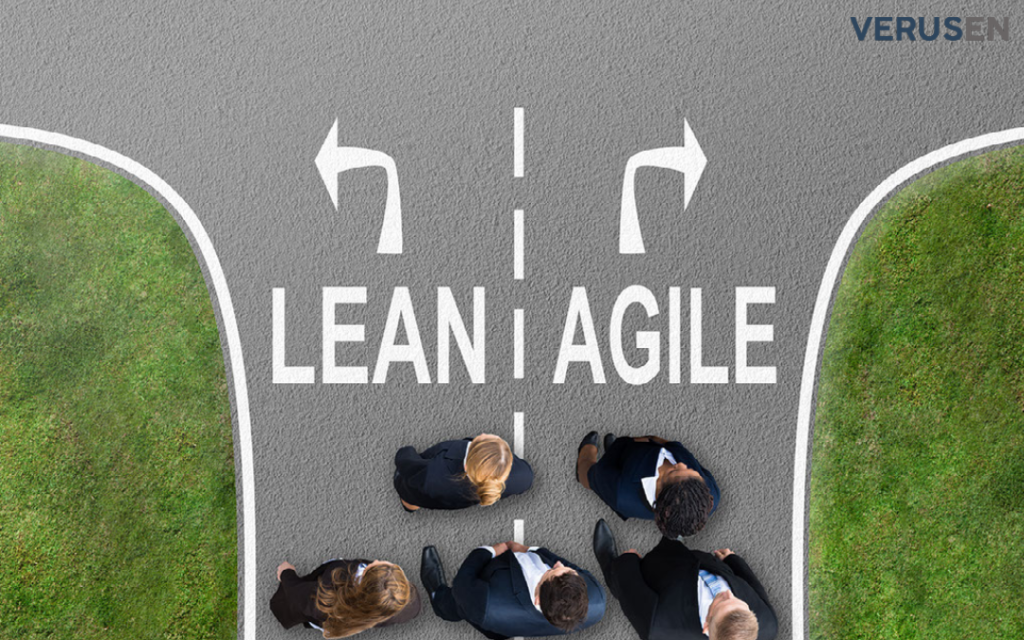Agile Or Lean In The Supply Chain? You Can Have Both.


There has been a decades-old challenge in the supply chain industry that organizations could have either an agile supply chain or a lean supply chain, but they couldn’t have both at the same time.
The pandemic changed the way organizations had to think about how they managed their supply chain—at least, that was the initial approach. As the chaos of those first months of Covid-19 and international shutdowns was in full swing and the supply of certain products couldn’t meet demand, companies knew they had to do something different. Corporate leadership was open to new technologies for supply chain management.
But as time went on, enterprises adjusted to the new business operational normal, and the same corporate leadership that was open to new ideas became daunted by supply chain digital transformation.
It probably isn’t the digital transformation that concerns them but realizing how complicated it is to make a full digital transformation where every step of the supply chain operation is automated.
But you can’t get to the end until you get started.
Understanding Where We Were Pre-Pandemic
Before the pandemic, everything was lean across the entire supply chain—lean management, lean manufacturing, carry as little as possible, capital reduction, and so on. That was sufficient until we were faced with this black swan event. Suddenly, all the historical data was made virtually irrelevant. Anomalies became the norm, and it became nearly impossible to interpret demand. Supply chain processes couldn’t support the change.
“Good enough is good enough” was no longer working for the supply chain. It was time to stop the bleeding—the inability to meet demand—and start investing in technology that would offer a solution for keeping up with the new norms without missing a beat.
As the pandemic wore on, organizations began the slow shift from lean to reducing supplier risk. Inventories went from lean to being beefed up, and there was a willingness to spend the money to make sure the demand was met and that organizations could deal with a supplier change from four weeks to a year. No company wanted to be handicapped from materials shortages. An agile supply chain became the necessity to keep the economy flowing, and the best way to achieve the move between lean and agile was by migrating to digital processes.
The Shift Back
As this shift continued, the need for resilient supply networks became the priority. Yes, the pandemic showed how the digital transformation could keep organizations operating according to need, but now there were questions around the length of time needed to transform.
Traditional project approaches, legacy systems, and processes are taking too long, and C-suite executives are now at the point where they have begun to question the increased costs necessary to trust service levels as well as the speed at which they can drive end-to-end transformation. This uncertainty plagues every organization across the globe and it is clear that the systems and processes of the past have failed to prepare for the desired future state.
Lean and Agile in the Digital Transformation
It seems like businesses are forced to choose their supply chain management depending on external factors. Go lean or go agile. It’s one or the other. There might be some opportunities lost by going lean—orders that can’t be filled, for example, because there isn’t enough supply on hand—but it is still a lot more cost-effective than going agile.
With the right digital transformation, there is no reason why a company can’t do both, be lean and agile at the same time. If your company is going through a digital supply chain transformation, and you’re looking at ways to build resilient supply chain networks, you should be able to pull whatever leverage you need at any time.
The pandemic showed the need to be resilient and to create a new normal. However, according to Gartner, only 21% of manufacturers feel that they have a highly resilient network.
According to the report, “We are at a crossroads in the evaluation of global supply chains and being fully prepared for all possible crises is not a possibility for even the most well-funded organization, requiring redirecting vast amounts of money toward non-performing or under-performing assets.”
Here are five steps to make the digital transformation that will create a more resilient supply chain network. They are:
- Data foundation is critical but data cleansing is not
- Digitizing the supply chain
- Strategic supplier alignment
- Change management and understanding intentions across organizations
- Speed and changing the dynamic of the supply chain
In the next article, we will look at these steps in greater depth and how following them offers the starting point to begin the digital transformation journey in which lean and agile can co-exist.
